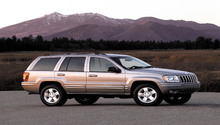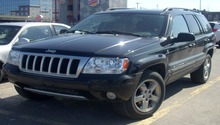Jeep Cherokee 1984-2001: Why is There Burning Smell Coming From My Car?
A burning smell of any kind is a cause for concern. While a burning smell can come from a variety of places, it is best to inspect the vehicle and properly diagnose the source to not only ensure proper vehicle operation, but to prevent a potential fire hazard.
This article applies to the XJ Jeep Cherokee (1984-2001).
A burning smell of any kind is never a good sign when it involves your Jeep Cherokee. There are various components on XJ models that each have a distinctive smell when they are burning. A burning odor can emanate from rubber components, electrical wiring, brake components, antifreeze coolant, and engine oil. Not only is a burning smell unpleasant, but it is also an indication that something is not quite right in your car. In severe cases, a burning smell is an early indication that something in the car is overheating and can potentially catch fire. It is important to take a few minutes to properly diagnose the source of a burning smell to determine if your vehicle can continue to be operated, or if it should be parked until repaired. This article will outline common causes for a burning smell on XJ Jeep Cherokee models.

Materials Needed
- Metric wrench set
- Metric sockets with ratchet and extension
- Cooling system pressure tester (optional)
- Screwdriver
- Creeper (for underbody inspection)
- Tire iron
Burning Rubber Smell
- A burning rubber smell can often be coming from the serpentine belt. While a loose serpentine belt can cause a burning rubber odor, a heavy rubber smell is often caused by a failing engine accessory eating up the belt. For example, if the air-conditioning compressor locks up, the engine can continue to run, but at the expense of the serpentine belt grinding away on the stuck pulley. The serpentine belt can be easily removed and all engine accessories checked to ensure they are operating correctly. Be sure the belt is tensioned correctly upon installation.
(Related Article: How to Change Serpentine Belt - CherokeeForum.com)

-
Another area to consider when experiencing a burnt rubber smell is the tires and inner fender liners. Many XJs are modified with bigger tires' and suspension for off-road use. Incorrect wheel offsets and large tires sizes can result in the tires rubbing the inner fender liners, especially during hard cornering. A quick inspection of the fender liners as well as the shoulders of each tire can quickly identify a tire that is rubbing and causing a burning smell.
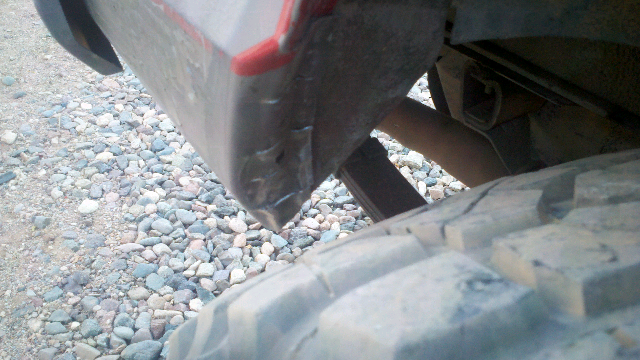
Figure 2. Over-sized tire rubbing fender.
Burning Electrical Smell
- A common problem among XJ models is the potential for the blower motor resistor and fan speed switch to fail, causing a burning electrical smell in the cabin. As the blower motor ages, it begins to have an excessive amperage draw and places a heavy load on the system. The result is a blown out resistor, melting of the blower motor switch, and melting of various wires. Many owners have reported that smoke can come out of their vents when trying to use the heater or A/C. A quick inspection of the blower motor and associated wiring can quickly identify that burning electrical smell.

- Another source of electrical burning smell can originate from the alternator. It is not uncommon for an alternator regulator or battery to fail and cause the alternator to overheat as well as burn up. Some individuals have been caught off-guard when their engine bay started billowing smoke while driving. The root cause was later identified as a shorted battery that caused the alternator to charge at its maximum amperage and overheat. Usually, the dash gauge will indicate a problem in the charging system before the alternator overheats, so take the time to properly diagnose the charging system before attempting to drive the vehicle. Shrugging off a dash warning light could end up allowing your car to catch fire.
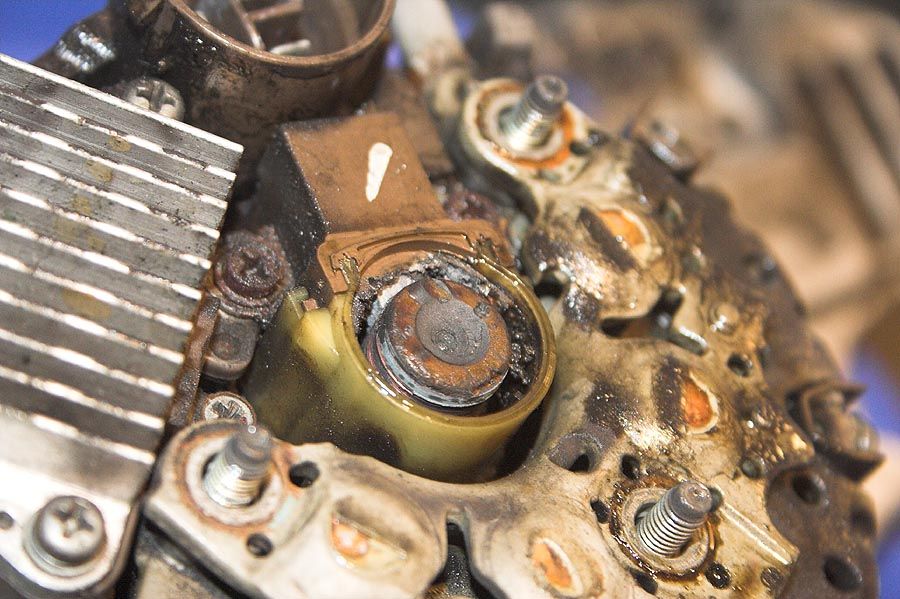
Burning Brake Smell
- A sticking brake caliper or wheel cylinder can cause the brake pad/shoe to constantly contact the braking surface and lead to overheating brakes. In most cases, a caliper slide pin or caliper piston is stuck in place and does not allow the brake pad to move away from the brake rotor when the pedal is released. The continuous contact can not only cause a burning smell, but will often cause the vehicle to pull to one side, and can lead to complete brake system failure if the brake fluid boils. Additionally, a dragging brake has also been known to catch on fire if driven for a long enough period. A stuck brake can easily be identified with a quick brake system inspection. Look for signs of heat discoloration on the braking surfaces. A stuck brake will usually require the component to be rebuilt or replaced.
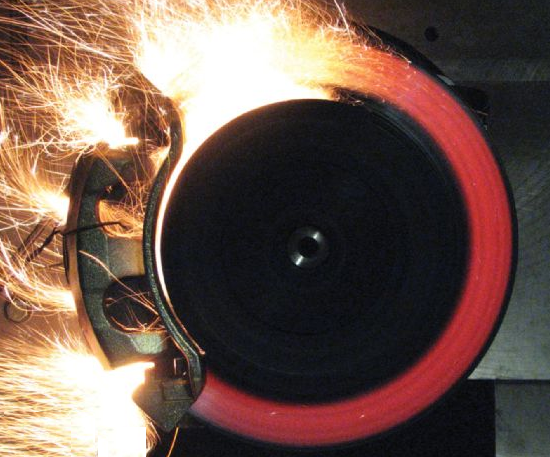
Burnt Coolant Smell
- A common complaint among XJ owners is the smell of burnt engine coolant. The XJ is robust and built quite tough, but as the vehicle ages, leaks in the cooling system can pop up. Many owners have reported split coolant hoses and leaky thermostat housing gaskets that have allowed small amounts of coolant to leak onto the engine. As the engine heats up, the leaking coolant will burn off, but leave a burnt coolant smell. Similarly, a leaking or faulty radiator cap can vent coolant steam and give off an antifreeze odor. It is best to inspect the cooling hoses, radiator, water pump, freeze plugs, and thermostat housing when the engine is cool. More often than not, leaking coolant will leave behind a trail, even if it has dried up. If no coolant leaks can be visibly located, pressurizing the cooling system will aid in identifying the source of the leak.
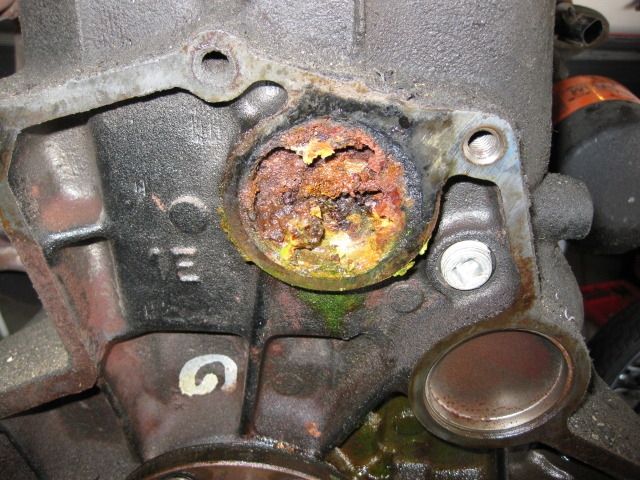
Burning Oil Smell
- XJ models with their lengthy inline-6 engine configuration have been known to be hard on the valve cover gasket. A valve cover gasket that leaks even a minuscule amount of oil will allow the oil to work its way down onto the exhaust manifold and burn. It is also common for the rear main seal to seep oil onto the exhaust pipe and cause a burning oil smell. A leaking rear main seal will leave a trail of oil along the underside of the car, often ending at the rear end. A burning oil smell on an XJ Cherokee is almost always caused by a leak at one of these two areas. A valve cover gasket can be quickly and easily replaced at home; however, the rear main seal is at the back of the engine and replacement is a bit more involved. That being said, the rear main seal is a two piece design and can be changed without removing the transmission.

Pro Tip
Before jumping to conclusions and replacing a rear main seal or valve cover gasket, tighten the oil pan bolts and valve cover bolts. These bolts can loosen up from vibrations and allow for oil leaks. Individuals have successfully stopped leaks by simply tightening these bolts.
Related Discussions
- Rubber Burning Smell - CherokeeForum.com
- Burning Coolant Smell - CherokeeForum.com
- Brake Caliper Sticking - CherokeeForum.com
- Engine Hissing, Oil Burning Smell - CherokeeForum.com
- Burning Smell on Startup - CherokeeForum.com




